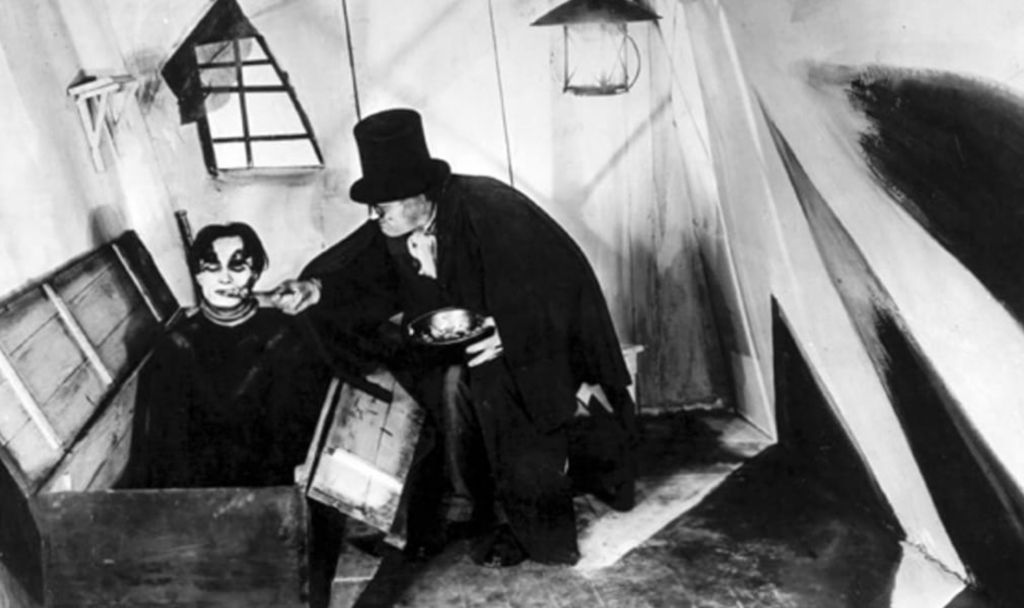Even if you’ve never actually watched The Cabinet of Dr. Caligari, you’ve seen it. You’ve seen it throughout the century of cinema history since the film first came out, during which its influence has manifested again and again: in Fritz Lang’s Metropolis, Dario Argento’s Suspiria, Terry Gilliam’s Fear and Loathing in Las Vegas, Tarsem Singh’s The Cell, and Guillermo del Toro’s Nightmare Alley — not to mention much of the filmographies of auteurs like David Lynch and Tim Burton. These are just some of the films referenced by Tyler Knudsen, better known as CinemaTyler, in the video essay above, “Dr. Caligari Did More Than Just Invent Horror Movies.”
“A case can be made that Caligari was the first true horror film,” writes Roger Ebert. In earlier cinematic scary stories, “characters were inhabiting a recognizable world. Caligari creates a mindscape, a subjective psychological fantasy. In this world, unspeakable horror becomes possible.”
The techniques employed to that end have also convinced certain historians of the medium to call the picture “the first example in cinema of German Expressionism, a visual style in which not only the characters but the world itself is out of joint.” Knudsen places this style in historical context, specifically that of Germany’s Weimar Republic, which was established after World War I and lasted until the rise of the Nazis.
Politically unstable but artistically fruitful, the Weimar period gave rise to a variety of new artistic attitudes, at once enthusiastic and overwhelmed. “Whereas impressionism tries to depict the real world, but only from a first glance or impression instead of focusing on details,” Knudsen says, “expressionism tries to get at the artist’s inner feelings rather than the actual appearance of the subject matter.” Hence the bizarre sets of Caligari, whose every angle looks designed to be maximally unconvincing. And yet the film is entirely faithful to its particular reality: not the one occupied by Weimar-era Germans or anyone else, but the one it conjures up in a manner only motion pictures can. 102 years later, The Cabinet of Dr. Caligari remains a haunting viewing experience — and one expressive of the sheer potential of cinema. You can watch it above.
Related content:
10 Great German Expressionist Films: From Nosferatu to The Cabinet of Dr. Caligari
From Caligari to Hitler: A Look at How Cinema Laid the Foundation for Tyranny in Weimar Germany
How German Expressionism Influenced Tim Burton: A Video Essay
Based in Seoul, Colin Marshall writes and broadcasts on cities, language, and culture. His projects include the Substack newsletter Books on Cities, the book The Stateless City: a Walk through 21st-Century Los Angeles and the video series The City in Cinema. Follow him on Twitter at @colinmarshall, on Facebook, or on Instagram.
